The year’s finest conjunction is upon us. Chances are you’ve been watching Venus and Jupiter at dusk for some time.
Like two lovers in a long courtship, they’ve been slowly approaching one another for the past several months and will finally reach their minimum separation of just over 1/4° (half a Full Moon diameter) Tuesday evening June 30.

Most of us thrill to see a single bright planet let alone the two brightest so close together. That’s what makes this a very special conjunction. Conjunctions are actually fairly common with a dozen or more planet-to-planet events a year and 7 or 8 Moon-planet match-ups a month. It’s easy to see why.
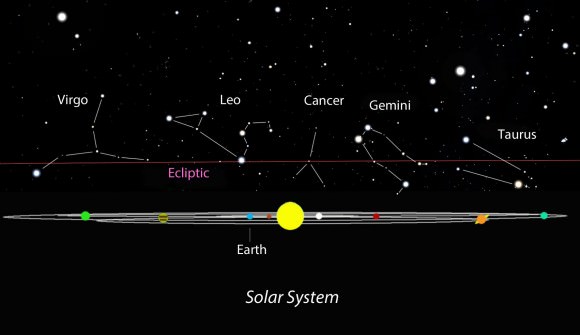
All eight planets travel the same celestial highway around the sky called the ecliptic but at different rates depending upon their distance from the Sun. Distant Saturn and Neptune travel more slowly than closer-in planets like Mercury and Mars. Over time, we see them lap one another in the sky, pairing up for a week or so and inspiring the gaze of those lucky enough to look up. After these brief trysts, the worlds part ways and move on to future engagements.
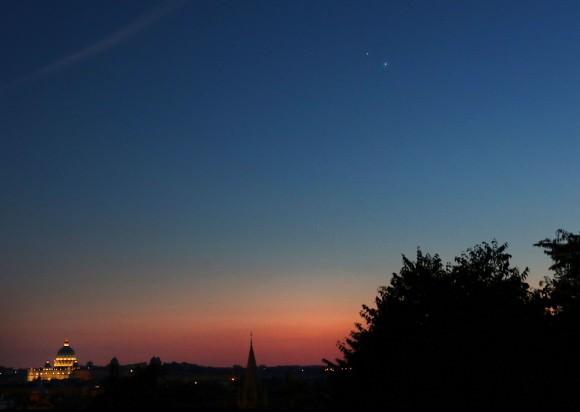
In many conjunctions, the planets or the Moon and planet are relatively far apart. They may catch the eye but aren’t exactly jaw-dropping events. The most striking conjunctions involve close pairings of the brightest planets. Occasionally, the Moon joins the fray, intensifying the beauty of the scene even more.
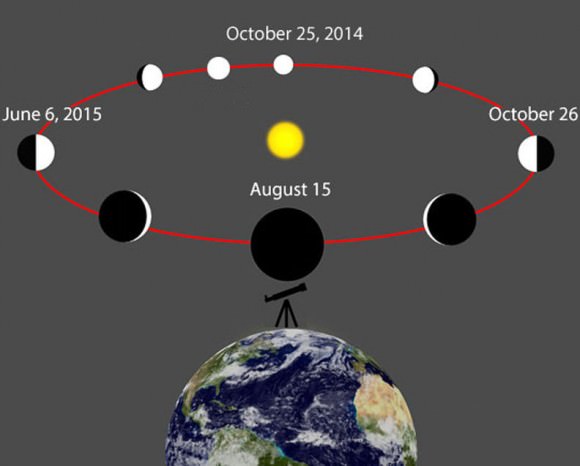
While moving planets are behind many conjunctions, they often don’t do it alone. Earth’s orbital motion around the Sun helps move things along. This week’s event is a perfect example. Venus is currently moving away from Jupiter in the sky but not quickly enough to avoid the encounter. Each night, its apparent distance from the Sun decreases by small increments and the planet loses altitude. Meanwhile, Jupiter’s moving away from Venus, traveling east toward Regulus as it orbits around the Sun.
So how can they possibly get together? Earth to the rescue! Every day, our planet travels some 1.6 million miles in our orbit, completing 584 million miles in one year. We see this movement reflected in the rising and setting times of the stars and planets.
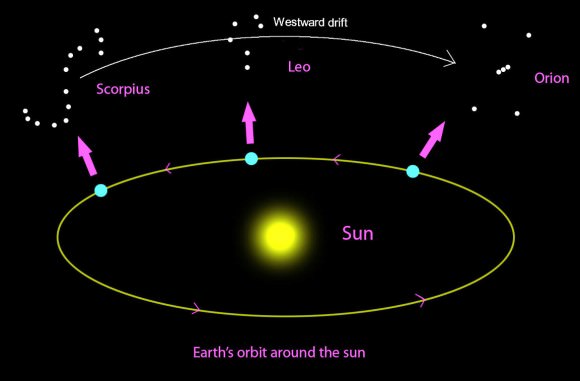
Every night, the stars rise four minutes earlier than the night before. Over days and weeks, the minutes accumulate into hours. When stars rise earlier in the east, those in the west set earlier. In time, all stars and planets drift westward due to Earth’s revolution around the Sun.
It’s this seasonal drift that “pushes” Jupiter westward to eventually overtake a reluctant Venus. Despite appearances, in this particular conjunction, both planets are really fleeing one another!
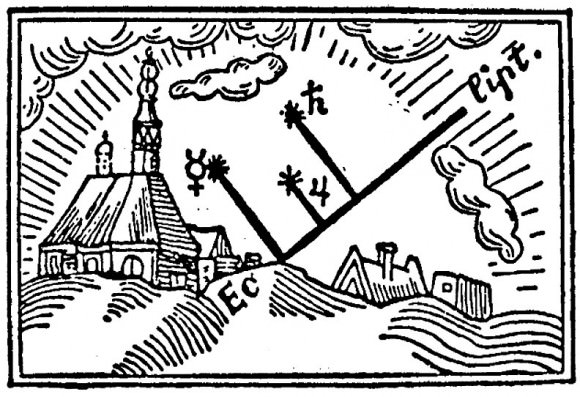
We’re attuned to unusual planetary groupings just as our ancestors were. While they might have seen a planetary alignment as a portent of kingly succession or ill fortune in battle, we’re free to appreciate them for their sheer beauty. Not to say that some might still read a message or experience a personal revelation at the sight. There’s something in us that sees special meaning in celestial alignments. We’re good at sensing change in our environment, so we sit up and take notice when unusual sky events occur like eclipses, bright comets and close pairings of the Moon and planets.

You can watch the Jupiter-Venus conjunction several different ways. Naked eye of course is easiest. Just face west starting about an hour after sunset and drink it in. My mom, who’s almost 90, will be watching from her front step. Binoculars will add extra brilliance to the sight and perhaps show several moons of Jupiter.
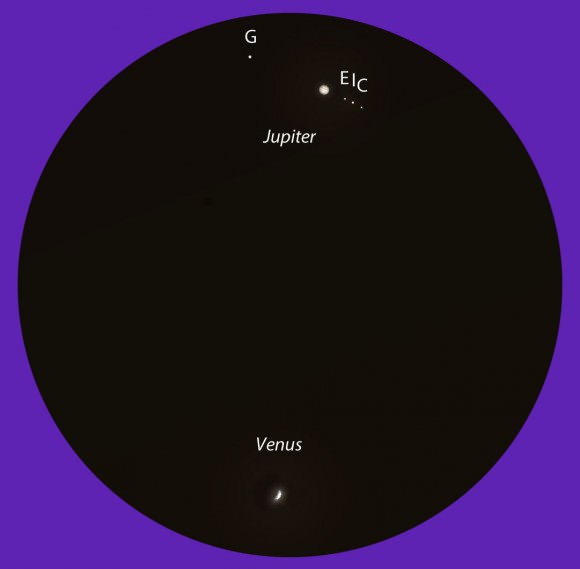
If you have a telescope, I encourage you to point it at the planetary doublet. Even a small scope will let you see Jupiter’s two dark, horizontal stripes — the North and South Equatorial Belts — and several moons. Venus will appear as a pure white, thick crescent 32 arc seconds across virtually identical in apparent size to Jupiter. To tame Venus’ glare, start observing early when the sky is still flush with pale blue twilight. I think the best part will be seeing both planets in the same field of view even at moderate magnification — a rare sight!
To capture an image of these shiny baubles try using your cellphone. For many, that’s the only camera we have. First, find a pretty scene to frame the pair. Hold your phone rock-solid steady against a post or building and click away starting about an hour after sundown when the two planets have good contrast with the sky, but with light still about. If your pictures appear too dark or light, manually adjust the exposure. Here’s a youtube video on how to do it with an iPhone.
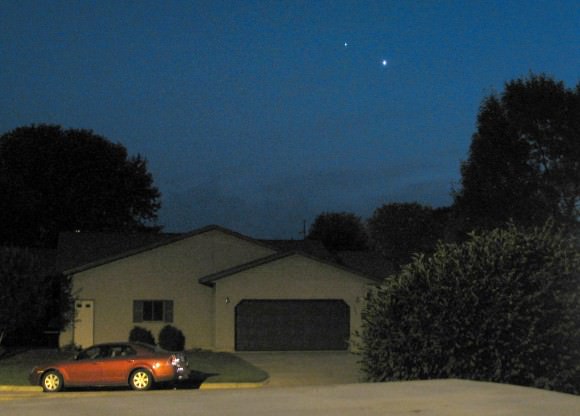
Point-and-shoot camera owners should place their camera on a tripod, adjust the ISO or sensitivity to 100, open the aperture or f/stop to its widest setting (f/2.8 or f/4), autofocus on the planets and expose from 5-10 seconds in mid-twilight or about 1 hour to 90 minutes after sunset. The low ISO is necessary to keep the images from turning grainy. High-end digital SLR cameras have no such limitations and can be used at ISO 1600 or higher. As always, review the back screen to make sure you’re exposing properly.
I’m not a harmonic convergence kind of guy, but I believe this week’s grand conjunction, visible from so many places on Earth, will stir a few souls and help us appreciate this life that much more.

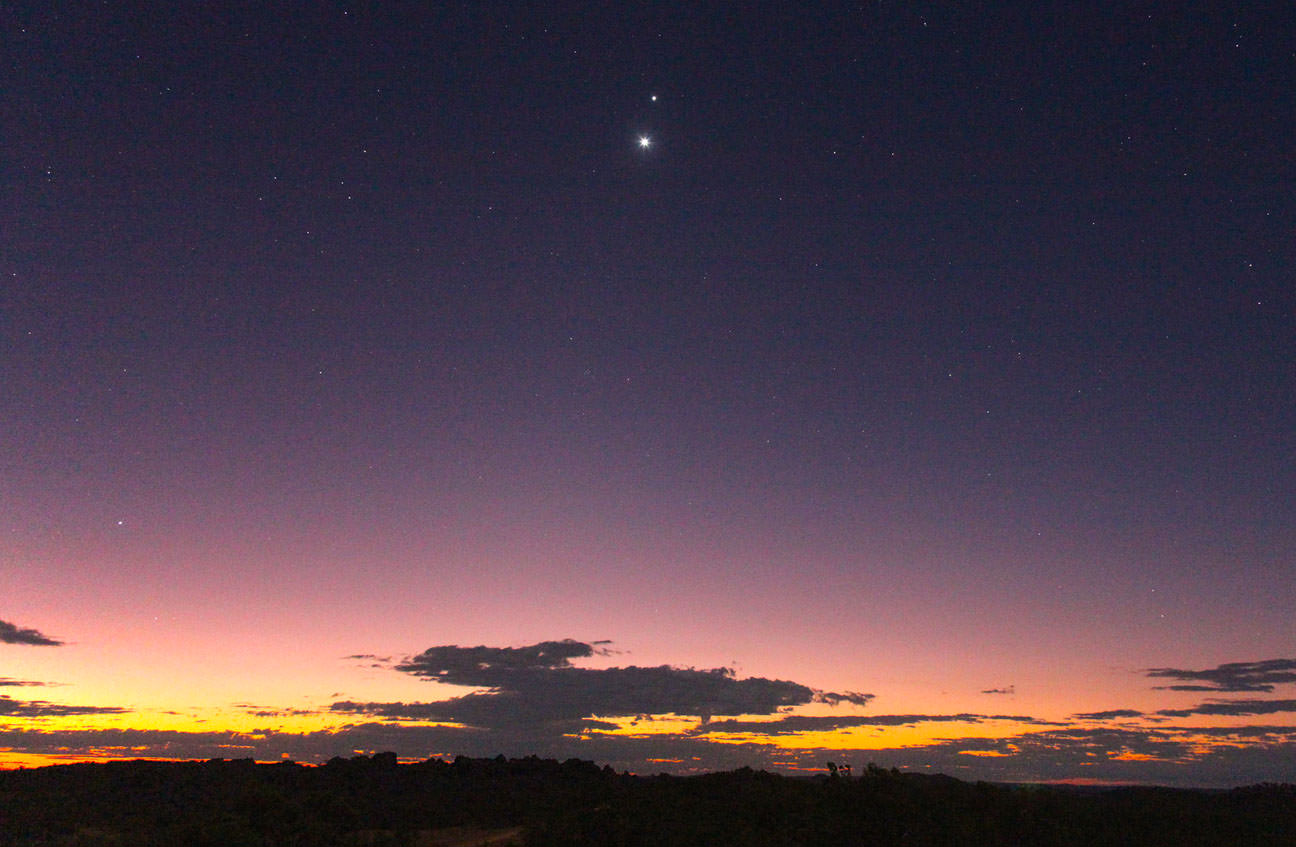
Excellent article.
Thanks Wayne 🙂
This is a terrific article, but I wish you would rewrite the sentence “All eight planets travel the same celestial highway around the sky called the ecliptic.” Our solar system has more than eight planets, as dwarf planets are planets too, meaning we have minimum of 14+ planets. The ecliptic is the path of the Earth not of the Sun. and like Pluto, Mercury also has an orbit inclined to the ecliptic.
Hi Laurele,
Thank you for your comment. I chose 8 to keep it simple and because there are still just 8 official planets. If dwarf planets were planets – in the sense the Earth is a planet – I would have certainly included them. A lot of people would concur with you however that dwarf planets count too, so I understand your point. And yes, I couldn’t agree more about the Earth’s path defining the ecliptic. In our human-centric point of view, Earth’s orbit defines the solar system plane. But as the other planets also lie on or close to that plane, I felt it fair to say that all 8 travel a similar path, which is called the ecliptic as seen from Earth.
Hi. I am following the pair for months. Indeed a spectacle. Yesterday I tried to observe through a telescope and Indeed exactly as the illustration (But the moons different of course). Venus in one side of the field and Jupiter in the other. Tonight I hope to use larger magnification and take photographs. Since I can photo the whole moon I will be able to catch both as they are just 23′ apart. From Israel I will miss the 19′ but I think that 4 arc-minutes are not that important.
Here are my photos from yesterday. Even a simple DSLR at 250mm manage to get out two of Jupiter’s moon but Venus is way overexposed so no crescent visible (The crescent is clearly visible in the telescope tough)
http://www.thevenustransit.com/2015/06/jupiter-and-venus-conjunction.html
If you are compiling a gallery from viewers around the globe, feel free to use any photo
Gadi
Gadi,
Wow, nice work and beautiful photos! Thank you for sharing the link.
I believe closest conjunction is at 9:51 pm on the 30th, Hawaiian Standard Time. Venus/Jupiter set 11 minutes later (10:02) as seen from Waimea, Kauai.
Love all the info and pics.
Sigh, we’re having a lot of rain here in the Midwest. I was looking forward to seeing both planets thru my 3″ refractor in the same field of view.
RUF,
Try again tomorrow night (July 1). They’ll still be very close.
I really wanted to see that live with my own eyes, but I missed. I seen some other pictures, I really liked it.
I was just looking at this outside a minute ago… it really stands out at dusk!
Pantzov,
Thanks for the report. We got to see it here in Duluth, Minn. also.